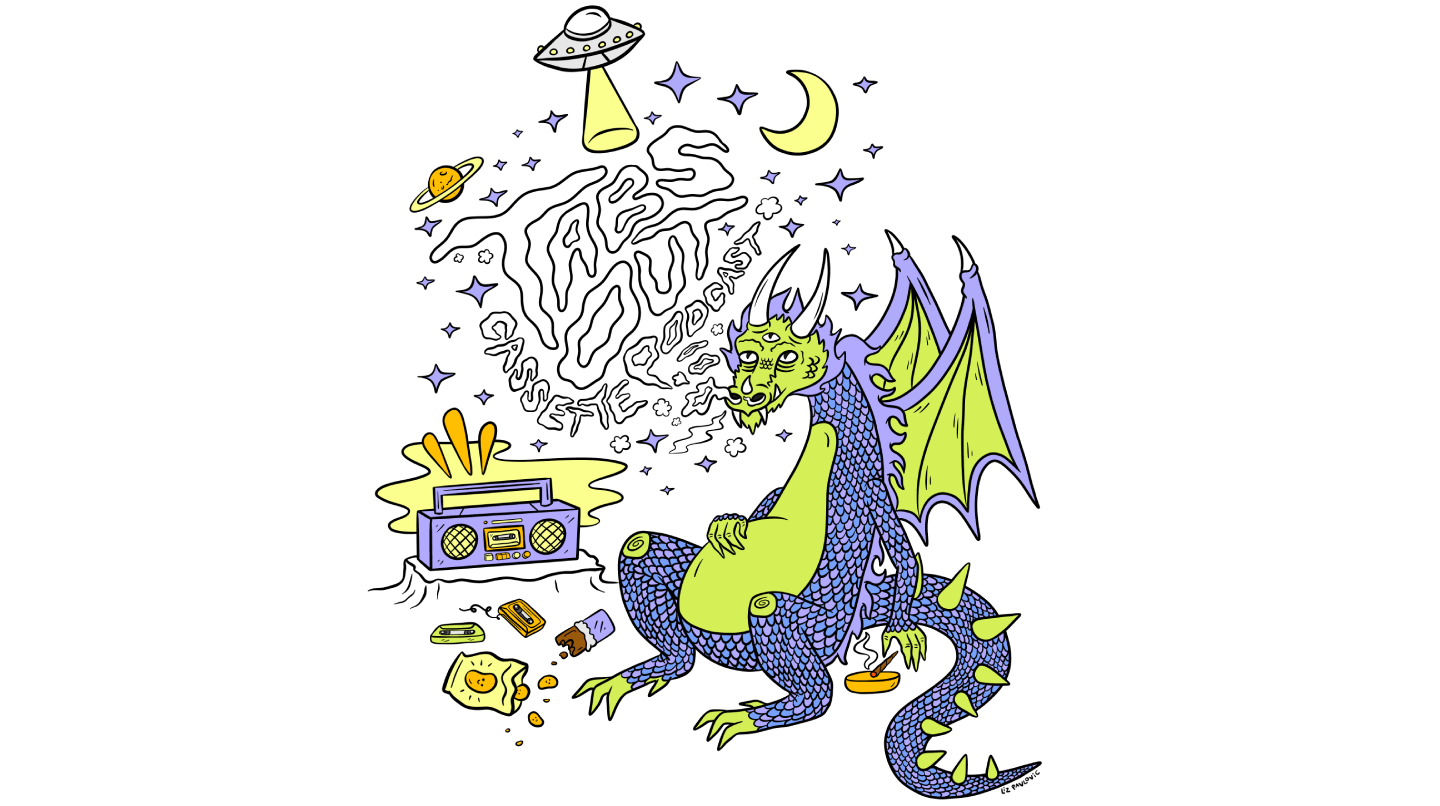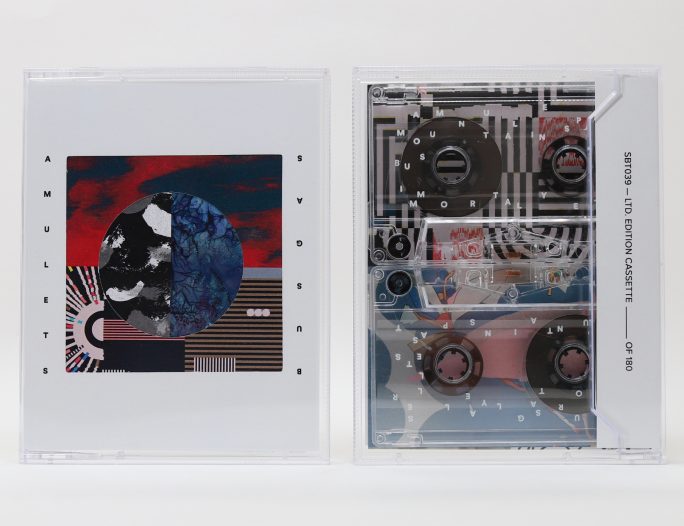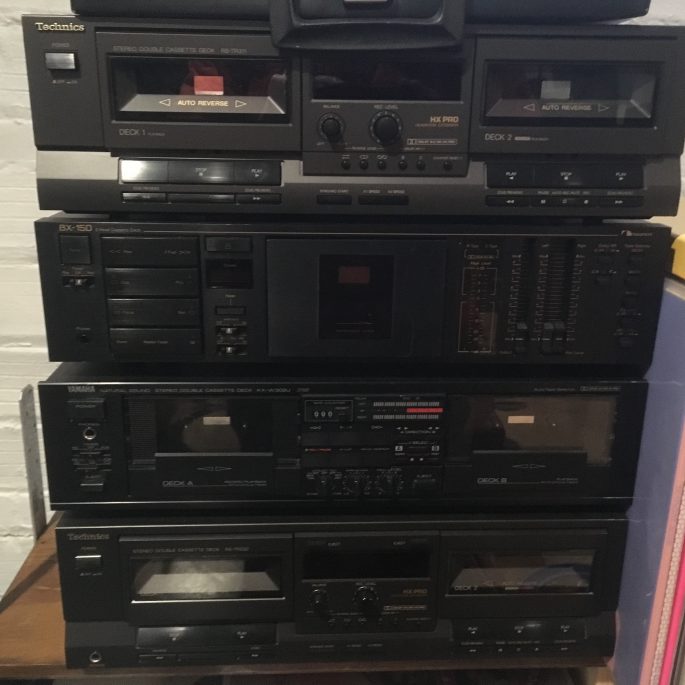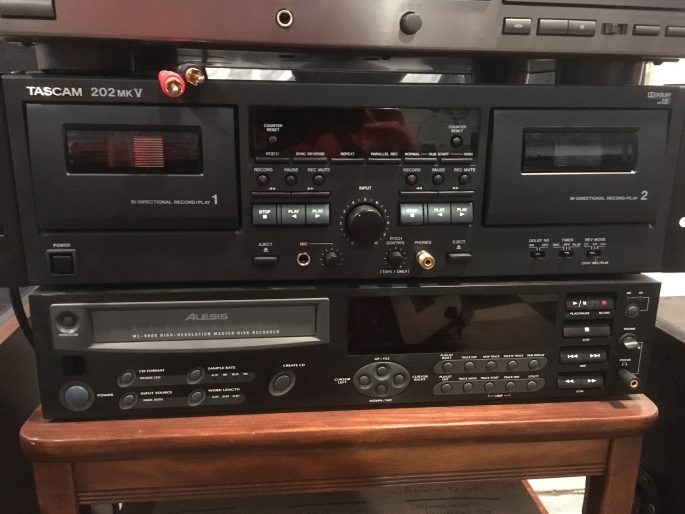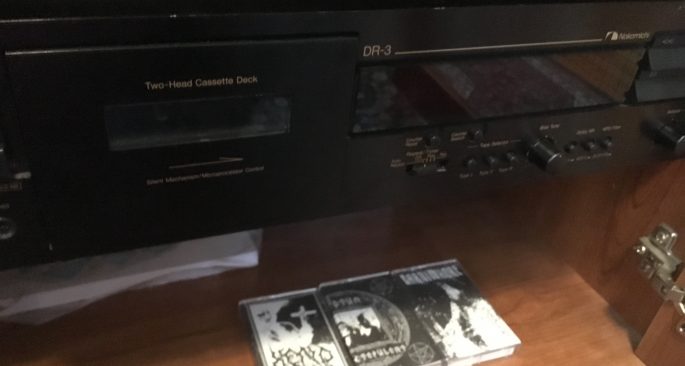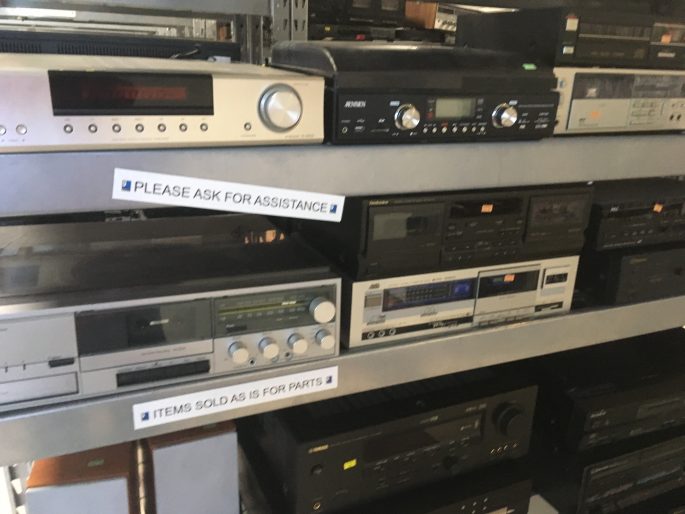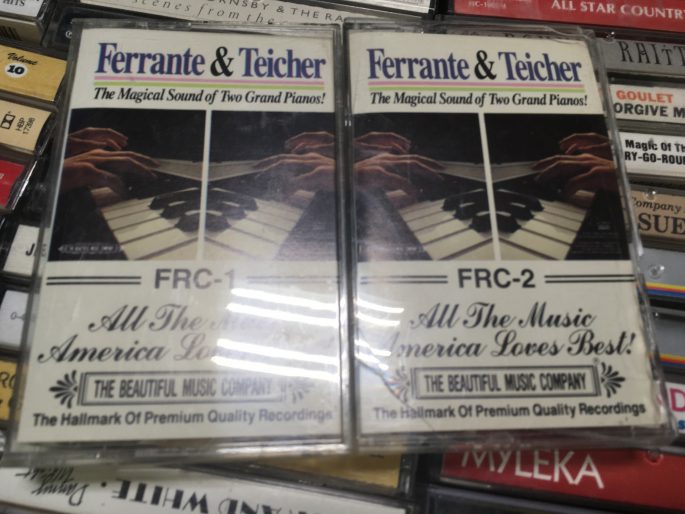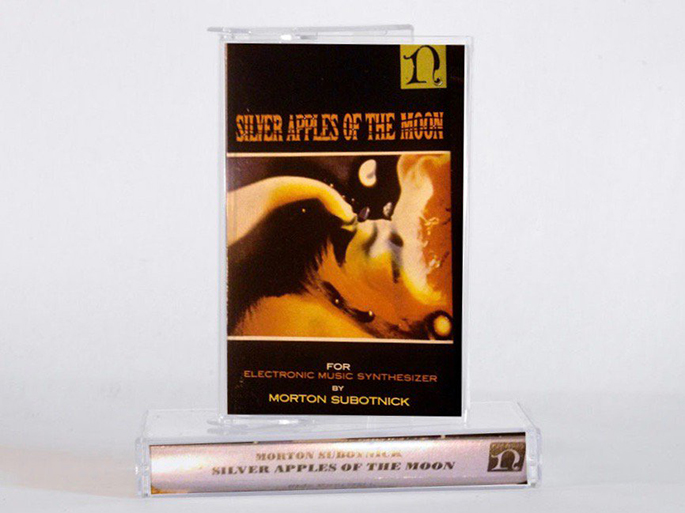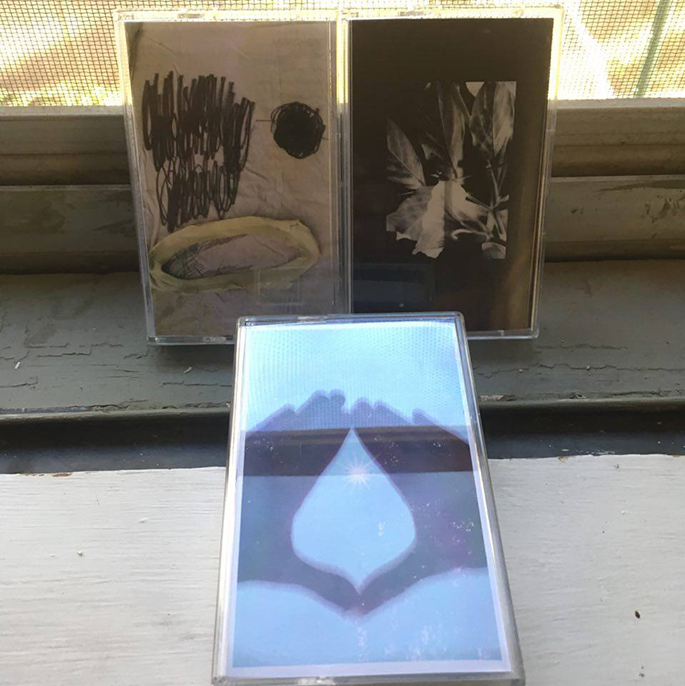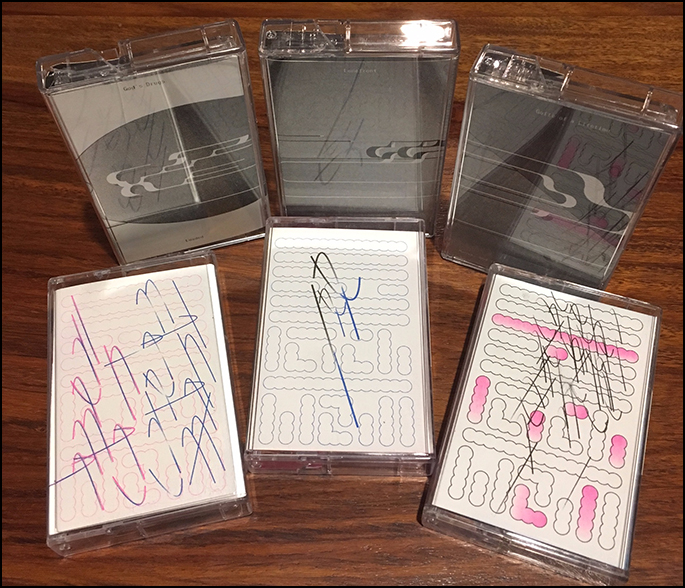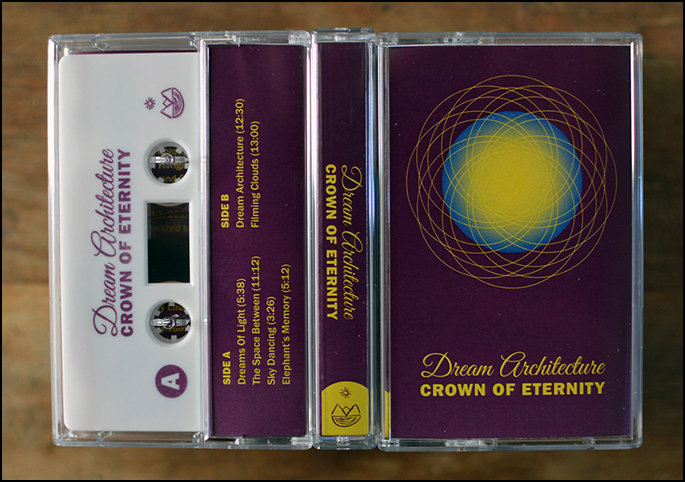Space Age Pressure Pad #5: Already Dead Tape Club and what I’ve been listening to
12.10.18 by Scott Scholz

Greetings, dear readers! It’s been a hot minute since the last SAPP installment, and I’ve just finished a whirlwind of organizing and computer upgrading with hopes that I’ll be able to do more writing in the coming weeks and months. A big part of organizing was figuring out how to comprehensively address tapes, which have been gradually accumulating into their own drawers and piles all over my house. They’re all comfortably nestled together in my studio now, in an innovative organizational scheme that I like to call “Scottological order.” Tapes present some different challenges than vinyl and CDs, in my experience: because tape labels and their clever curation are such a fundamental element of the cassette underground, it makes sense to do most primary sorting by label, and secondarily parse by chronology/catalog numbers rather than alphabetical order. But then there are always exceptions, particular artists whose bodies of work necessitate keeping them together regardless of label. And of course there are the odd-sized releases and compilations that present their own organizational challenges.
In the case of making my own space more functional, I found that I had to split three broad categories of material into their own separate shelving system due to the sheer volume of material. German Army and their many many many side projects required their own split-off storage space, and even the simple act of placing them together reminded me what a huge impact that artist has had on my own thinking about music and culture in the last five years or so. And two prolific labels necessitated their own more spacious housing, too: Constellation Tatsu and Already Dead Tapes.
A mere 12 hours after I finished putting the last Already Dead releases into their new digs, the label announced a fascinating new “Tape Club” concept for 2019, and the timing couldn’t be more perfect for my thinking about the scope and depth of their work. I was just musing to myself about what an unusual, singular label Already Dead is–they’re far more prolific each year than the typical label, and their curatorial impulses are much broader.
The idea of the Already Dead Tape Club is pretty straightforward: you make one payment up front, and you’ll get copies of every tape release they do in 2019 shipped straight to your door. You can read all about it and sign up right here.
For any other label, I would honestly be pretty skeptical about this concept. But I think Already Dead is the perfect tape label to pull this off: the combination of broad genre representation in the AD catalog, from avant-pop to jazz to rock/punk/hardcore to experimental to hip-hop and many points in between (all excellent specimens of their respective approaches), and the unusual volume of tapes they release each year, means that you’re going to go on a lot of adventures if you sign up for this club. And you’re probably going to learn about some new-to-you artists that you’ll want to keep following, and that’s just about the best thing about tape labels, if you ask me.
It’s that time of year where folks who write and think about music start forming “best of the year” lists in their heads, and just as an example of how killer Already Dead is, there are six AD releases from 2018 on my shortlist for the best of the best. They are:
Fuck Lungs – Honeysuckle
The second outing for this Curt Oren/Joe Hess sax/drums duo, “Honeysuckle” is a very different experience than their free-jazz blowout debut. These pieces still carry a certain free-improv informality, but this round digs deep into sound exploration. I’m not sure if everything is live with some loops or if there are some overdubs (I’m thinking overdubs?), but these jams have as much vertical density as horizontal at times. Take “Now Is Not the Time,” for example, which starts off in a sonic space between Sun Ra and the latest Bjork album, coalescing into some digitally-manipulated sound exploration, from tribal outer spaces to trippy innerspace in under four minutes. Album closer “You Live Alone” is spacious and anthemic, and you’d swear Oren’s horns are turning into synth pads. But if you were into the fire music freakouts of the debut, don’t fear–there are jams like “Honeysucker” and “Lunar Tunes” waiting to rip your face off.
The Myriad Ones – The Hardest Part
Sometimes the wide range of artists featured on Already Dead come together in new collaborations, and this one is absolutely fascinating. Prolific maestro Bob Bucko Jr. comes together with guitar ripper Storm Ross, along with a cast of other AD alums, and the results are fascinating. Many of the tunes are uptempo rock numbers, a bit more aggressive than BBJr’s recent song-oriented works, and Ross fires off some epic guitar runs and tuneful riffs. But sometimes the more drone- and pedal point-oriented approach of BBJr takes over, and we get to hear Ross take on more relaxed-tempo vibes than usual. I don’t listen to a lot of “rawk” these days, but I find “The Hardest Part” quite easy to put on, with some nods to classic rock and roll forms and tones, but with a forward-thinking and free approach. And that redemptive post rock-flavored album closer, “Samsara,” ohmigaga.
Schneider/Complainer – s/t
AD regulars Complainer, another excellent duo project featuring Mabel Suen and Joe Hess on horns/drums, took on a long-distance collaboration with Jörg Schneider of Jealousy Mountain Duo and Nicoffeine, and the results are near perfection. Schneider, one of my favorite drummers in the world, suffered a major setback a couple of years ago, with hand injuries that have prevented him from playing regularly and touring. As luck and perseverance would have it, though, Jörg can still play, as long as he limits his time behind the kit. As a long-time international road warrior, he’s met and played with great musicians all over the world in rock and jazz scenes, and he’s met his new circumstances with the brilliant idea of doing studio collaborations with folks from all over the place. These pieces were made by bouncing tracks between St. Lous and Hückelhoven, Germany, but you’d never guess they weren’t knocked out in the same room. Killer ideas and great playing all around. And by the way, I would be remiss not to note that Jörg is starting to rack up a number of these kinds of collaborations, which he’s making available digitally and on vinyl here if you’re excited to hear more.
Curt Oren – For Sam, Forever Ago
Mr. Oren is probably best known for his bari sax prowess, having solo circular-breathed his way around the country many times in the last decade. But this solo album, dedicated to his recently-departed dog Sam, is a compositional and emotional tour de force, full of surprises and deeply-felt playing (a lot like having a dog!). Tender lyricism, rich orchestration, and great contrasts between small and ginormous aural spaces make this album feel like a real travelogue, conceptually lingering at those moments in life that spark complex memories of joy and pain intertwined. It’s not an upbeat-sounding album overall, flirting with a spectrum of melancholy flavors, yet somehow I always come away from it feeling rejuvenated and ready to make some complex memories of my own.
Comfort Food – Falling Up a Down Escalator
As I’ve mentioned here before, Chicago’s Comfort Food lays down a fascinating groove- and loop-based form of jazz that reminds me of the heady times in the mid-90s when you could be playful and serious and danceable and still be “jazz.” In addition to the RIYL references of Joey Baron and Sex Mob I made regarding their last outing, I’d add Critters Buggin to the list this time–grooves skitter and fragment, basses run through weird harmonizers, and strange synthetic drones cut in and out of the mix in a way I can’t remember hearing since the weirdest moments in the CB discography. But there were twice as many people in that band–Comfort Food is especially notable, I think, in feeling just as wild and unrestrained, while obviously having to do a lot more up-front compositional planning to make these arrangements possible with two people. But don’t listen because it’s a technical marvel–listen because it’s marvelously fun to chase this pair down some of the weirdest alleys that ever rocked a freaky beat.
Dotson – De/termination
Ryan already did a nice ‘lil writeup of this banger last month, but to expand on that for a moment: I’ve been following Dotson’s work closely since his first self-released tape, and his musical journey never ceases to surprise and impress me. On “De/termination,” I’m most struck by the relentless rhythms, which featured on tracks like “Compulsion” off his previous tape “Indifference,” but have grown faster, harder, and more prominent. And I love it. Some of Dotson’s earlier works spoke to me in terms of juxtaposing textural materials over relatively longer spans of time, while this tape hits with uncompromising immediacy. In “these troubled times,” as it were, the evolution feels right: these pieces have lots of subtlety to offer, but they come out swinging and pull you inside first.
So what might next year bring in the Tape Club format? There’s a tentative list at the bottom of their signup page, but the only way to find out for sure is to take the plunge and sign up.
